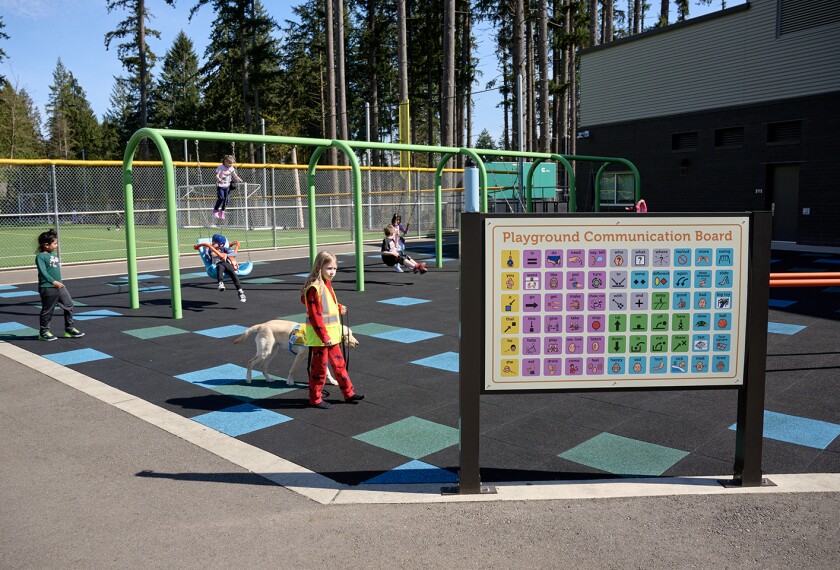Since the federal No Child Left Behind Act became law in early 2002, the U.S. Department of Education has acknowledged that at least some special education students may not be able to reach proficiency on grade-level tests.
In 2003, federal regulations permitted states to develop alternative achievement standards to measure the progress of students with the most significant cognitive disabilities. At least some scores from such tests can be counted as “proficient” when calculating adequate yearly progress, or AYP, as long as they do not exceed 1 percent of all students in the grades tested.
But states complained that the rule did not address students with moderate disabilities who also may be unable to reach grade-level standards, even with intensive instruction. So in May of this year, Secretary of Education Margaret Spellings unveiled what is known as the “2 percent” rule.
For 2005 only, it permits eligible states to identify schools or districts that did not make adequate progress based solely on the scores of their students with disabilities. Using a so-called proxy method, states can then increase the percent of students with disabilities deemed proficient in those schools or districts by the equivalent of 2 percent of all students assessed.
The additional flexibility has helped a substantial number of schools make AYP this year, at least in some states. In California, of the 699 schools that had a special education subgroup, only about 25 percent would have met their targets without the added flexibility, said Bill Padia, the director of the policy and evaluation division for the California Department of Education.
Instead, about 39 percent met their reading targets, and 40 percent met their math targets.
“So that made a massive difference,” Mr. Padia said.
‘Rife With Problems’
In Florida, 150 additional schools made adequate progress after applying the 2 percent rule. In Virginia, 54 more schools made AYP. In Georgia, the flexibility helped 65 more schools make AYP of 146 that initially did not meet their targets solely because of the performance of their special education subgroup.
Some observers worry that the federal government has set its estimates for the proportion of students with disabilities who cannot be expected to perform at grade level too high, excluding some 30 percent of all special education students from having to meet grade-level standards.
“By the time you’re up to 30 percent of all special education kids, you’ve really excluded a very high percentage, including a lot of students who ought to be able to make it with good instruction,” said Jay P. Heubert, a professor of law and education at Teachers College, Columbia University.
The real problem, added Daniel J. Losen, a senior associate with the Civil Rights Project at Harvard University, is the “fundamentally flawed” nature of the accountability provisions under the No Child Left Behind Act.
“I think everybody agrees we need subgroup accountability,” he said, “so we’re concerned about letting any particular subgroup off the hook. But we need to come to grips with the fact that the entire mechanism is rife with problems.”




